Guitar whammy bars: what you need to know
The tremolo (or vibrato) system is one of the electric guitar's pivotal inventions. Here's a primer on the key developments in whammy bar history
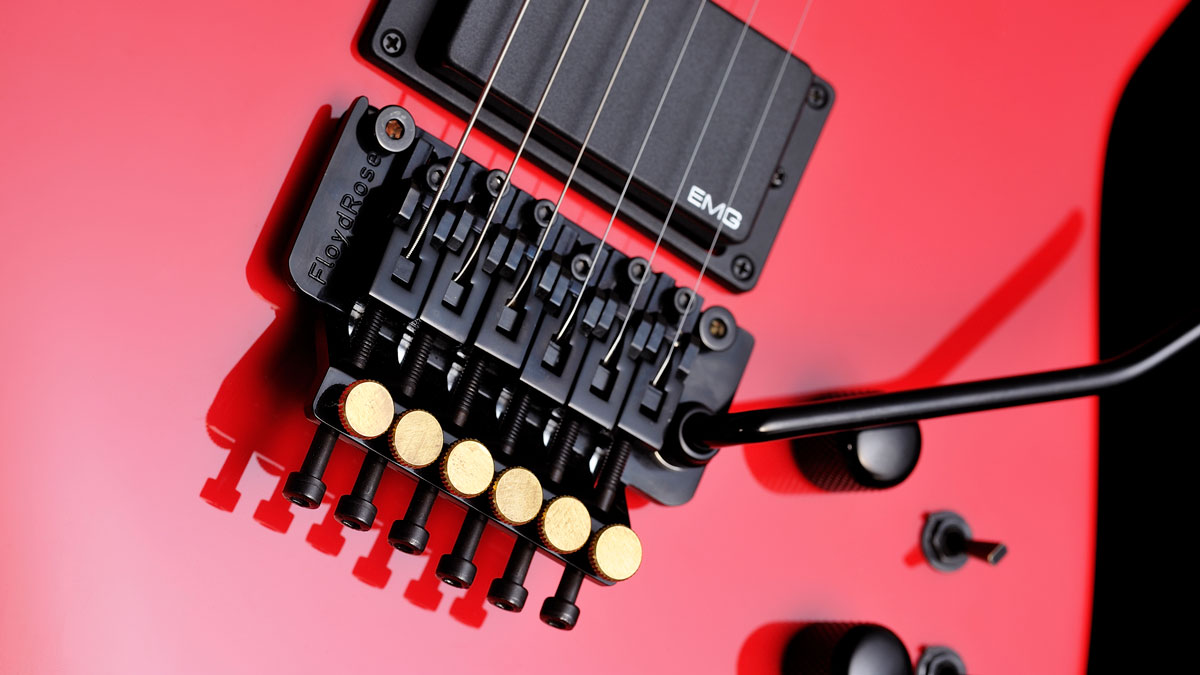
Tremolo, vibrato, vibrola, or wigglestick. They go by many names but essentially provide the same function: pitch variation of your electric guitar by altering the tension of every string at once.
This is achieved by manipulating a metal arm attached to the bridge or tailpiece. You can get some pretty insane sounds from the hardware – like dive-bombs, motorcycle revving, squeals, animal sounds, and much more – as well as more subtle dives and flutters.
There are a lot of different kinds of vibrato that have come and gone over the years. This article is focused on the mainline models, which are directly relevant today. So, here is a brief history of the whammy bar, an idea that revolutionized the guitar world.
Definitions
Let’s get some definitions out of the way. You may have heard whammy bars referred to as vibrato bars and tremolo bars interchangeably. Technically, tremolo is an oscillation of volume, and vibrato is an oscillation of the pitch itself. The terms are used synonymously, but the correct definition for the mechanism we’re talking about here is vibrato.
In some circles, “whammy” refers only to the locked kind that can take a lot of abuse and still stay in tune like the Floyd Rose. But more generally it is a blanket term to describe any kind of vibrato bar.
The history of vibrato
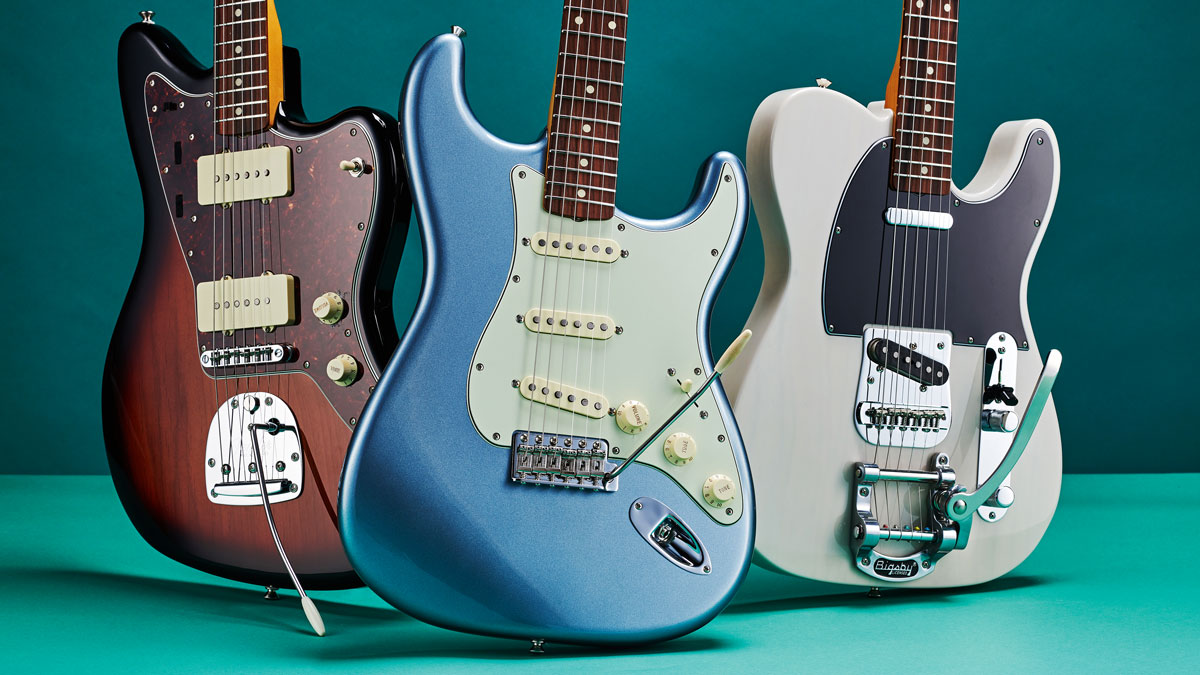
The first whammy bar to appear for the guitar was Doc Kauffman’s Vibrola in the late '20s and early '30s. At the time, it was not uncommon to see it featured on archtop and lap steel guitars. These early iterations were touchy and could create severe tuning issues if they were used with any amount of passion.
As legend would have it, Merle Travis – one of the most famous country guitarists in history – was tired of his Vibrola constantly forcing his guitar out of tune. He asked his friend, luthier and tech Paul Bigsby to fix it.
Get The Pick Newsletter
All the latest guitar news, interviews, lessons, reviews, deals and more, direct to your inbox!
Mr. Bigsby ran with the idea and wound up inventing the first tried-and-true guitar vibrato system, one that is still used today - the Bigsby. This new design finally created a system that was useful and brought the concept of whammy bars into the mainstream.
The term “whammy” became common slang among musicians in the 1950s. Fender would go on to perfect the early versions of whammy bars as we know them today. Companies like Floyd Rose and Kahler were not far behind.
How does it work?
These devices working a metal arm that is attached to the bridge or tailpiece of the guitar. Via this mechanism, the player is able to quickly vary the tension, and thus pitch, of the strings. This creates the pitch bend effect. While most vibrato bars can only take things down in pitch, floating designs, like the Floyd Rose, are able to raise the pitch as well by pushing the bar towards the end of the body.
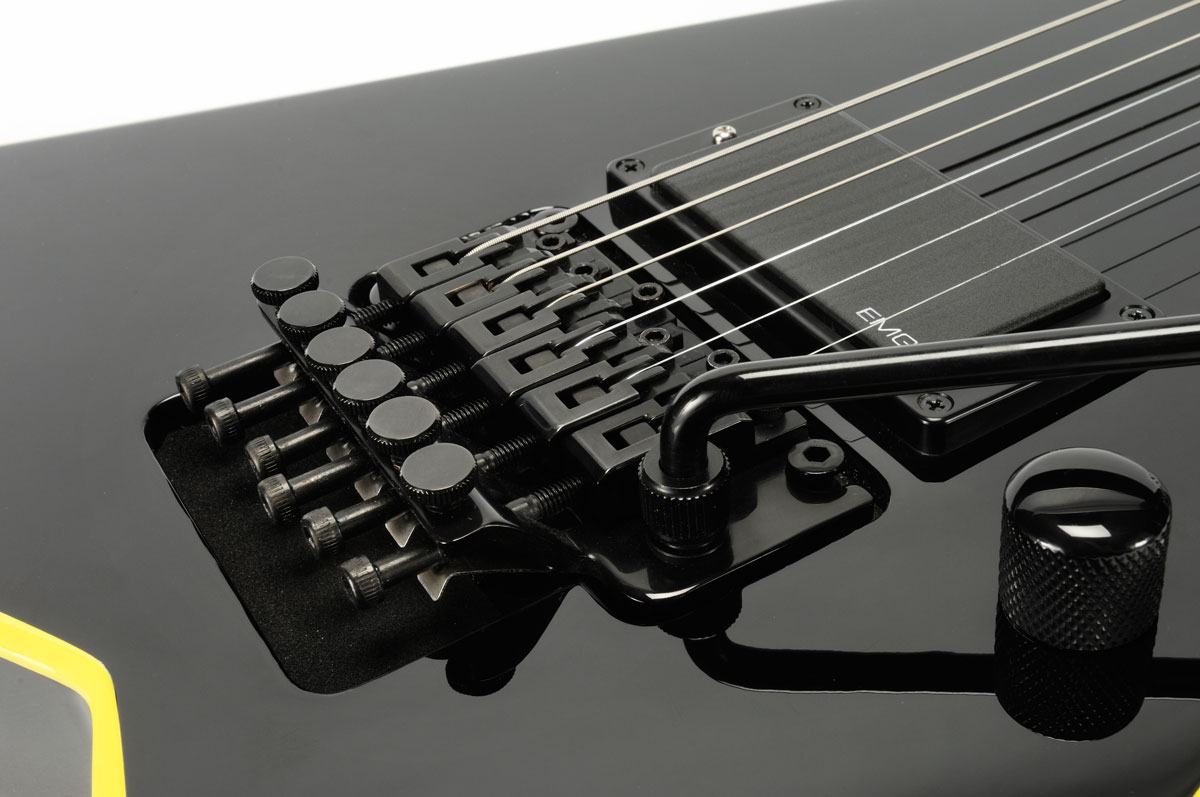
This will come as no surprise, but cheap guitars go out of tune a lot faster than guitars of high quality. It can also take some time off of string life due to them constantly being stretched. Spring tension also fades with time, leading to them needing to be replaced periodically.
Nut issues can also arise. If the nut isn’t properly cut when the strings are manipulated like this they might not return to normal pitch correctly. Getting a good tech or luthier can solve this, whether they can fix the one already on your guitar or create a new one.
The different types of whammy bars
There are two main types of whammy bars – detachable like Fender and Floyd Rose, and those that go with a tailpiece, like a Bigsby. More broadly, there are four main types – Fender floating and synchronized designs, Bigsby, and locking – like Floyd Rose and Kahler.
A lot of players overlook the differences between each type of whammy. But your playing style and what you need from it will have a massive impact on which kind is right for you
The first mechanical vibrato bridge was created and patented by Doc Kauffman in the 1930s. Originally known as the “Vibrola”, it came almost standard on the Epiphone Archtop guitars used by jazz and blues guitarists at the time. The idea was very well received. It wasn’t long before other manufacturers picked up on the interest and started incorporating them into their own designs.
A lot of players overlook the differences between each type. But your playing style and what you need from it will have a massive impact on which kind is right for you. Whammy bars come in two main types: the detachable kind like the Fender and Floyd Rose, and those that are structurally part of the bridge, like the Bigsby.
Here comes the Bigsby
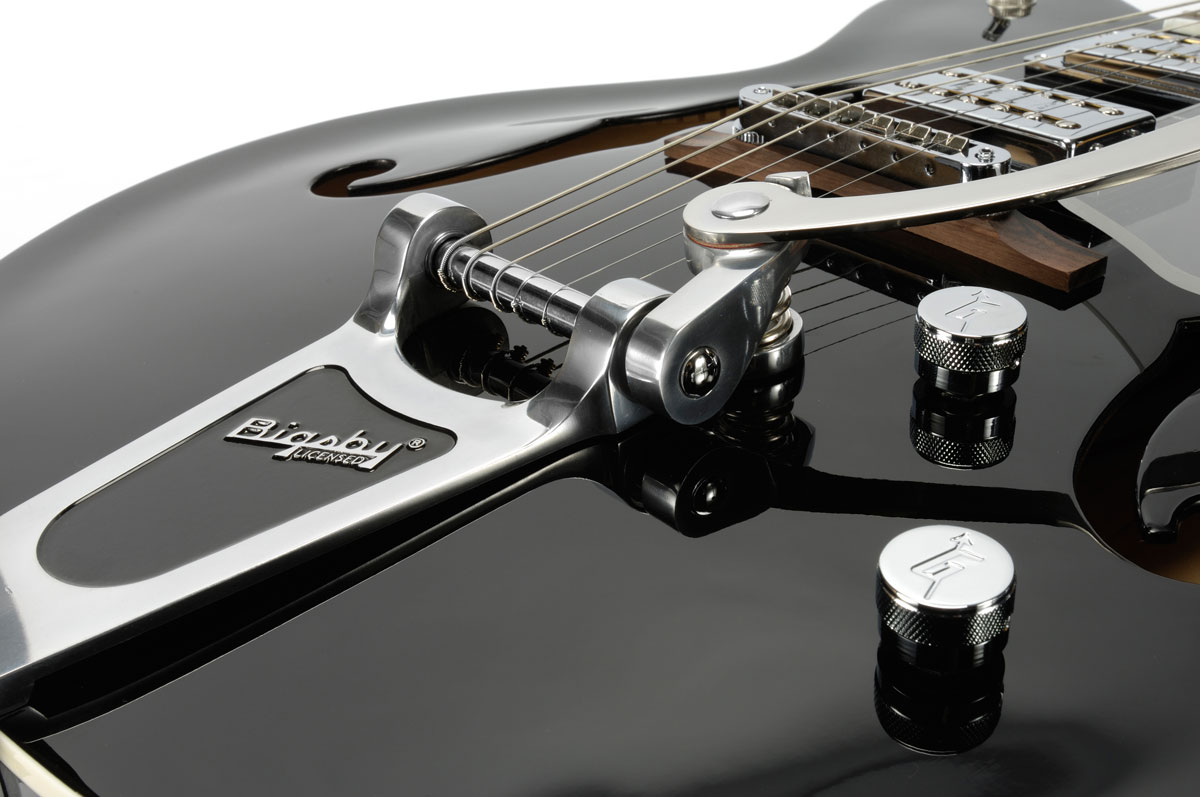
The Bigsby uses a rocker bridge as its primary build point. Instead of the strings being inserted through holes in the bridge, they wrap around a metal bar that is controlled by the whammy bar. Pushing down on the arm makes the strings drop in pitch.
Before this invention, players were intrigued by the idea, but it hadn’t struck mass appeal quite yet. Today, however, Bigsby tremolos are more popular than ever. They are easy to use, have a smooth feel, and are not impossible to retrofit. It’s just as common to find them on archtop jazzboxes as it is on a Les Paul, SG, or boutique models.
Sure, Bigsbys can’t get as extreme as certain other systems. But they are smooth, subdued, and subtle. And for a lot of players that is perfect. Their throwback look and unique sound have helped to keep them popular with players to the present day.
Finally, Fender
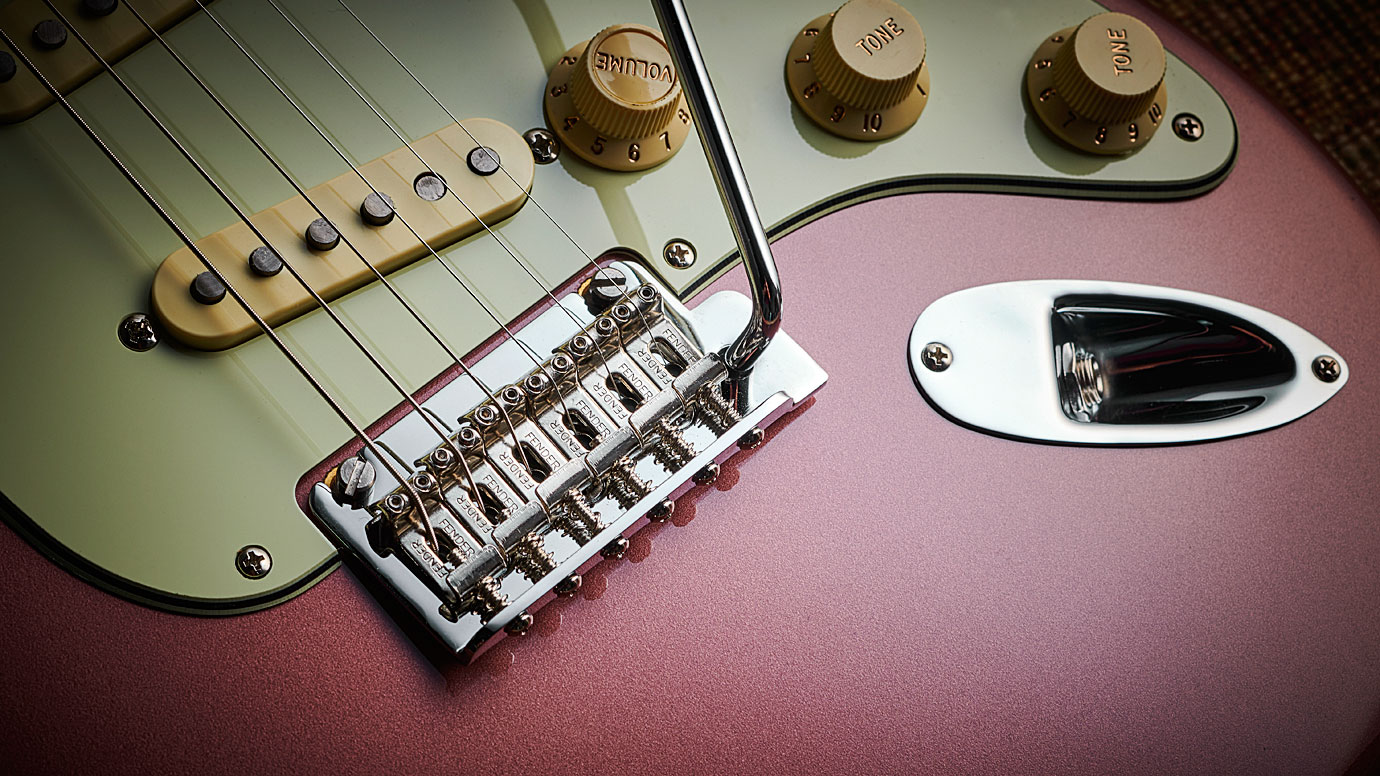
As in many areas, Fender was a true trailblazer in the world of whammy bars. The synchronized vibrato was released with the Stratocaster in 1954. Its name originates from its design, which allowed the saddle and strings to move in unison. This helps to eliminate saddle friction so that the strings return to their starting pitch when the bar returns to its normal position.
The first iteration of Fender’s tremolo was floating, but the company settled on the synch design as it provided more tuning stability. Upon release, it was more stable and capable of more extreme pitch bends when compared with the Bigsby, which piqued the interest of guitarists.
Like most Fender innovations, it is one of the most significant in the history of guitar.
Fender floating tremolo
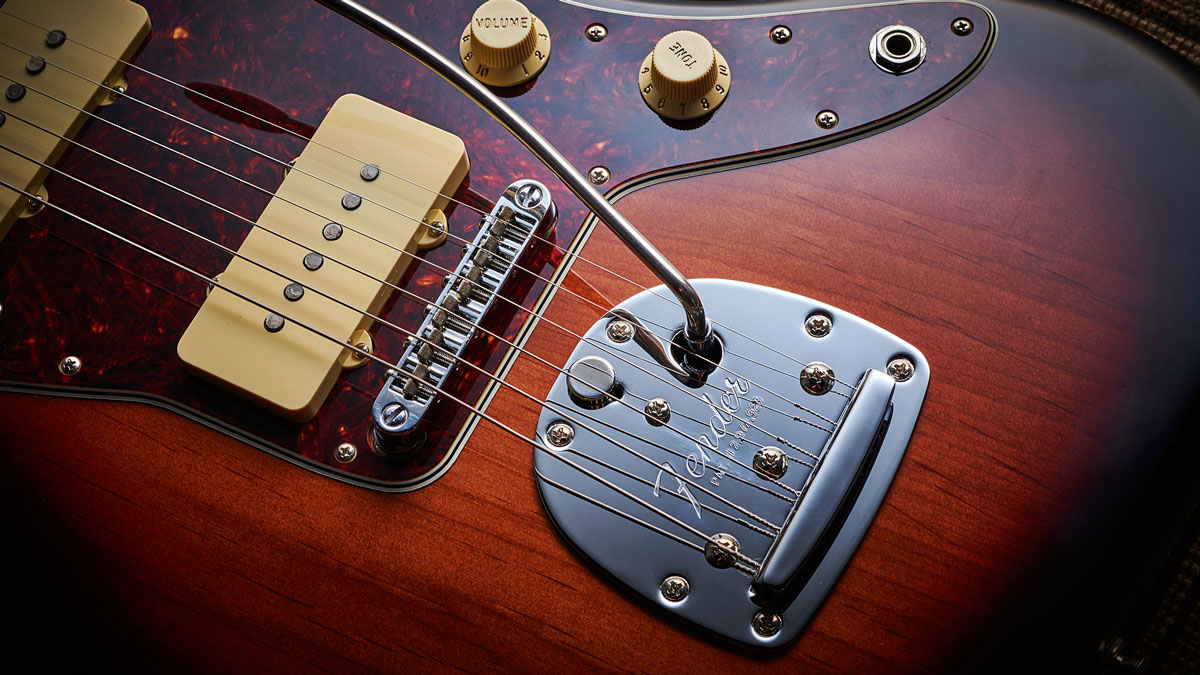
Fender patented the concept of the floating tremolo in 1958. This radical idea allowed the strings to be lowered and raised in pitch, and did so without much effort from the player.
The floating tremolo slightly raises off of the guitar body, but provides lower action. When the Jazzmaster was released to the world it had this style of vibrato, and vintage Jaguars and Mustangs are also equipped with a similar mechanism.
It wasn’t without its faults, however. Fender's floating trem was known to go out of tune easily and could be a little finnicky. However, if you’re the type of player who wants a sweeter, more natural sound, the Fender floating might be just what you’re looking for.
Floyd Rose takes it to the next level
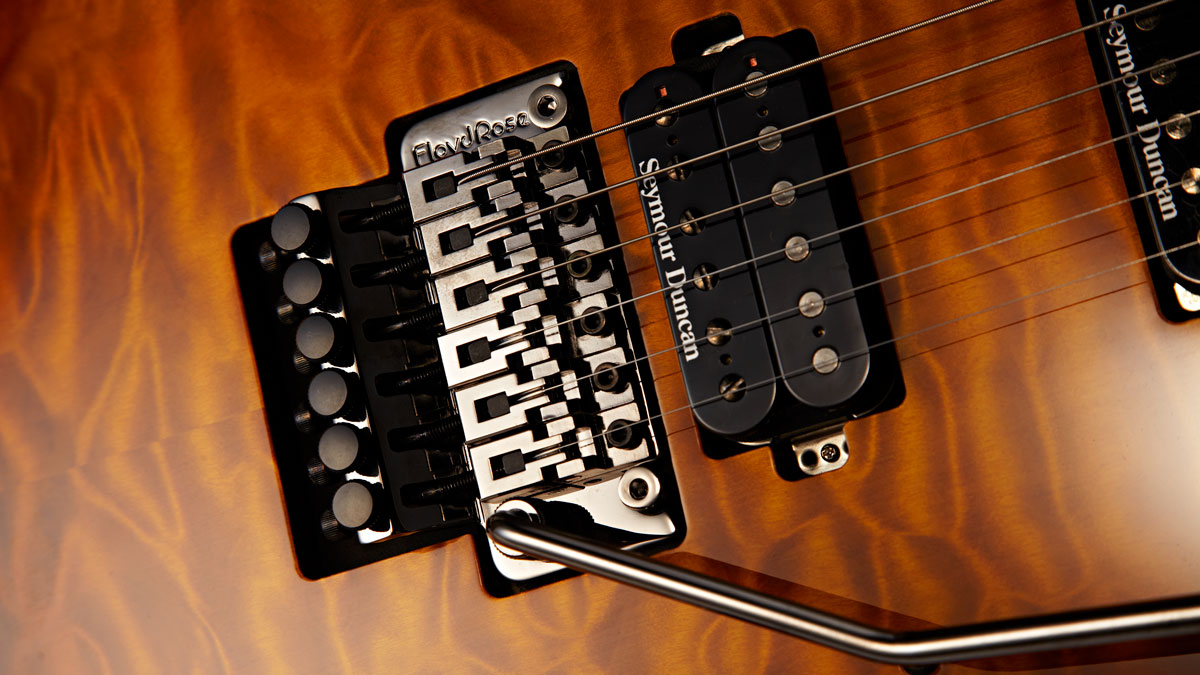
Floyd D. Rose created the first locking tremolo in 1979. The late, great Eddie Van Halen certainly helped to popularize it, and to this day, it remains still a gold standard for players who want more extreme effects like dive-bombing. This is because it offers a very wide range of pitch change.
It took influence from the Fender synchronized model, but in a Floyd Rose, the strings remain locked in place to prevent tuning and intonation issues. You just tune your guitar to pitch, then lock down the nut and bridge with an Allen wrench. Since the system is “floating”, pitch can be raised or lowered. This makes it more stable for these types of maneuvers.
Floyd Rose designs offer lower action than other systems, perfect for shredding and fast playing. The only real downside to this type is that they can fly out of tune if a string breaks, due to the way the system is balanced. This type of system also requires a specific body route and can be difficult to retrofit.
The downside is that Floyd Roses are somewhat difficult to set up and require a special (but easily accessible) set of tools that aren’t required for other models. Changing string gauge can drastically affect how it performs, too.
“Wins out on battery life, stealthy aesthetics and its well-judged Cable Tone feature”: Blackstar Airwire i58 review
“A distinctive brightness that no other strings have been able to capture”: How Rotosound revolutionized the bass world with its Swing Bass 66 strings – and shaped the sound of rock music in the process









